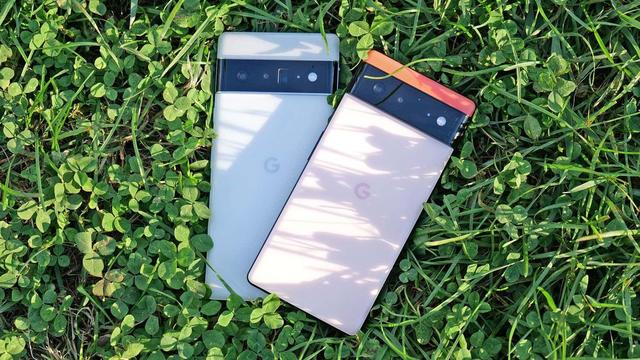Pixel 6 is so great that I don't see the point of buying another smartphone
Pixel 6 is so good that I don't see any reason to buy another phone

The article dated November 1, 2021 has been edited and republished. I'm sorry for those who recently bought another smartphone...! [See all images] The Pixel 6 and Pixel 6 Pro are finally out because the Pixel 6 is so great that I don't know what to buy another smartphone. With Google's Tensor chip installed, the AI system function is further enhanced, the camera is further enhanced, and the price is set at a low level. Check out Gizmodo's Sam Rutherford's review below! Until now, the Google Pixel has been called a flagship, but in reality, it felt like the software covered the lack of hardware, such as the number of cameras, battery capacity, and older processors. But with the Pixel 6, a combination of proprietary chip Tensor, updated components, a new design and smarter software finally unlocks the full potential of the Pixel. And with the price starting at $599 (74,800 yen in Japan), if you're looking to upgrade your smartphone this year (especially if you're an Android user already), why buy another smartphone? It's a smartphone that makes you want to ask yourself. Google Pixel 6/Pixel 6 Pro What is this? : Google's latest flagship smartphone with its own Tensor chip Price: Pixel 6 $ 599 (Japanese domestic price 74,800 yen), Pixel 6 Pro $ 899 (same price 116,600 yen) Favorite place: Nice price, Unique design, Tensor chip, tons of high-end features, great cameras and shooting modes, clever software and great battery life. What I Don't Like: The base model doesn't support mmWave 5G, doesn't have a headphone jack, and the in-screen fingerprint reader could be a bit faster.
More than just a camera bar
Google has been eager to introduce new designs to its phones, and with the Pixel 6, it's done it again. Instead of the square camera module you'll find on most phones these days, the Pixel 6's camera is housed in a camera bar, which makes sense both visually and functionally. The camera bar accentuates the three-color coloring on the back, but it also helps keep it flat and stable when placed on a table. This camera bar has solved a problem that has been bothering me for the past few years when smartphone camera modules have become huge. But the biggest change is that it feels much more premium than the Pixel 5. Gorilla Glass Victus on the front, Gorilla Glass 6 on the back, and IP68 waterproof and dustproof performance, so you don't have to worry about daily shocks, drops, or even submersion in water. Both Pixel 6 and Pixel 6 Pro have their own identities. The unbranded Pixel 6 has an unpretentious matte finish on the edges (which I personally prefer), while the Pixel 6 Pro has a glossy side that gives it a touch of luxury. Both Pixel 6 and Pixel 6 Pro are large in size. The Pixel 6 has a 6.4-inch display at 2400 x 1080 and a refresh rate of 90Hz, while the Pixel 6 Pro has a 6.7-inch display at 3120 x 1440 and a refresh rate of 120Hz. Those who like small devices may be disappointed. But if you look at the beauty of the Pixel 6's screen, wouldn't your dissatisfaction with the size of the screen subside? Both models have a brightness of 750 nits or more, and the OLED display has deep colors and a high refresh rate for smooth movement. My only gripe with the Pixel 6's design is that it's so big and tall that it's hard to reach for the power button. I like that it's under the volume buttons. I guess it depends on the person, but I lock and unlock my smartphone more often than adjusting the volume. Also, depending on the content, the Pixel 6's stereo speakers sound a little flimsy, but that's not a big deal. The in-screen fingerprint reader is useful (especially when masks are still required in many places, like now), but the unlock time is about the same as the long-ago Samsung Galaxy S10 and longer than the recent Galaxy S21. . It's not a big problem, I just need to get used to it, but I think it would have been better if it was faster.